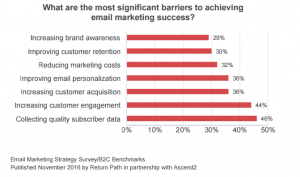
Social media has become an integral part of business; not only is it a place to advertise and from which you can reach and interact with customers, but it is also increasingly a recruitment tool.
The far-reaching power of social media sites such as Facebook, Twitter, and LinkedIn, allows businesses to reach a wider audience than advertising on recruitment sites does and solves some of the problems of traditional recruitment.
Using social media to recruit is simple but effective, as long as you’re doing it right; here we show you how:
Twitter has over 280 million active users monthly, giving any tweet you send the potential to be seen by a great number of people.
Established companies will often have an existing Twitter account with (hopefully) a good number of followers, meaning that a tweet promoting a new vacancy will automatically reach a wide net of individuals.
Additionally, Twitter is an open site, allowing those without accounts to view it (providing your account isn’t private); this is also advantageous as many see recruiting on Twitter as less intrusive than via email or phone.

When using Twitter to recruit, be sure to make the most of features such as hashtags; if there is a suitable existing hashtag don’t be afraid to use it as it could open the tweet up to a whole new and potentially more targeted audience.
In addition, broaden your search by asking current staff to retweet your original post.
Remember that you’re free to tweet the same message again later in the day or at another time.
If you’re having varying degrees of success try changing up the wording of the tweet to keep it interesting, and it sounds simple but don’t forget to include a link to the full posting of the job description.
It is estimated that 85% of internet users have a Facebook account, and (perhaps unsurprisingly) according to alexa.com, it’s the second most popular site in the world.
With such a large user-base, ignoring Facebook as a recruitment tool would be foolish; and while it should in no question be your only method of recruitment, additional ‘advertising’ of positions on the social media site is more than recommended.
In a similar way to Twitter, posting a status regarding vacancies is a great way to reach people who might otherwise not have heard about it.
Increasingly, using Facebook and Twitter, is a method used by many companies as it brings jobs to the attention of people who aren’t necessarily actively looking for a new position, but who might have the right skills and interest in it.
This can be greatly beneficial as it opens up the vacancy to a large talent pool, rather than restricting it to solely job-seekers.
Businesses also have the opportunity to create pages to represent their brand. These pages allow a business to post statuses and photos etc. that are relevant to their brand and audience.

It’s also a great way to spread recruitment news.
Facebook is an excellent platform to post links to recruitment sites and to give information of upcoming vacancies. It can also be a good medium for companies to share insider information on what it’s like to work there.
Photographs or comments from current employees can give individuals an insight into the company as a whole and can help drive recruitment – such as the #InsideBrandwatch hashtag.
Sites like Facebook allow a degree of communication not available on recruitment sites, with interested parties able to post short messages or questions regarding the vacancy.
While the usual avenue of applying for a job will still need to be taken, posting vacancies or general recruitment information on Facebook can bring it to the attention of new eyes and allow more of an informal approach to advertising a job.
LinkedIn has become the go-to site for anybody looking for a new job, acting as an online portfolio of sorts – allowing individuals to store their CV, list their key skills and connect with employers past, present and future.
However, it’s also a great tool for employers to recruit new staff.
Similar to Facebook, companies can use LinkedIn to create a profile – a page which allows businesses to share information about their brand. It’s therefore important to keep these pages updated as it’s not uncommon for candidates to follow companies of interest.
Meanwhile, LinkedIn’s advanced search function allows companies to target keywords and find candidates based on key skills, or by past or present employers, for example.
Additionally, employers have the option of posting jobs on the site for a small fee; yet, even without this function, it’s a great tool for a business to have at its disposal.
The site enables individuals to form relationships with businesses, through direct messaging, and to build up a network with colleagues (past and present), with the possibility of recommending them to businesses or for specific roles.
Ultimately, in a society where much of our lives are conducted online via social media, it’s no real surprise that recruitment is heading that way too.
While it is clearly not a good idea to rely entirely on the likes of Facebook or Twitter to advertise jobs and find candidates, they are good places to enhance your search and open up roles to a different, perhaps more varied, audience.
(199)







